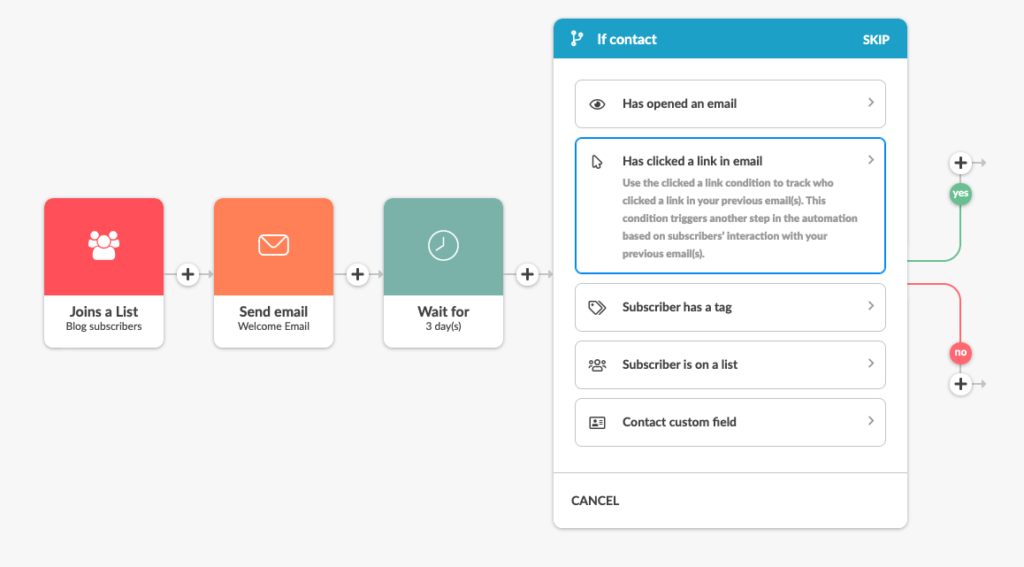20 Pro Ways For Deciding On Email List Sellers
Wiki Article
What Factors Should I Think About When Purchasing A Family Medicine Email List?
To reap the maximum benefits from your marketing and outreach campaign, you need to consider a variety of crucial factors. What you should consider is:1. Quality and accuracy of the data
Source of data: Verify that the data provider collects information from reliable and verified sources. These include medical directories, licensing bodies professional associations, or an opt-in databases. The email addresses of practitioners in family medicine should be current, accurate and specific to the audience you are targeting.
Verification procedure: Find out the procedure for verification of the provider. The list of email addresses should be maintained and regularly cleaned to get rid of invalid or inactive email addresses. Valid email addresses decrease bounce rate and improve the speed of delivery.
Segmentation Options: The list of options should allow segmentation according to criteria such a geographic location, the number of years in practice, size of the practice or the specific areas (e.g., pediatrics, geriatrics, and preventive medicine). Segmentation can be used to improve engagement through more targeted outreach.
2. Legal Regulations
Data Privacy Laws: Ensure that the list is compliant with General Data Protection Regulation (GDPR) in Europe, California Consumer Privacy Act (CCPA) in the U.S., and other relevant data privacy laws. To avoid penalties from regulatory authorities, the email addresses should be legally collected with consent.
CANSPAM Act compliance: If you're conducting email marketing campaigns within the U.S.A. make sure your list is compliant with the CANSPAM Act. This includes having clear opt-out methods and not using deceptive subject lines or false details in your emails.
Check to see if emails have been obtained through opt-in consent. This means that physicians practicing family medicine agreed to be contact by third-party companies via marketing communications. This guarantees that privacy laws are adhered to and decreases the likelihood of receiving spam complaints.
3. Provider Reputation
A reputable provider: Choose an organization that is known for providing top-quality and compliant information. To make sure that the service is trustworthy and reliable Look for testimonials from clients and case studies.
Transparency: Providers should be transparent about the ways they collect data as well as how often they update it. If the service provider is unable to describe their methods of sourcing data this is a red flag.
Customer Support - Look for companies that have strong customer support. There may be a need for assistance in tackling technical issues, segmentation of lists or making sure that the list conforms with the rules.
4. Cost of Return and Return on Investment
Pricing Models: Providers provide different pricing models, including pay-per-contact, flat fee, or subscription-based services. Choose a pricing model that corresponds with your budget while ensuring that you get a return on your investment.
Refund Policy and Replacement Policy. The most reliable companies provide refunds or replacements for invalid or outdated email addresses. Make sure you understand any clauses in the policy prior to purchasing.
Value for Money: Insist on more than cost. Although a cheaper list may look appealing, it may lead to poor delivery and high bounce rates. It's best to buy a premium list that provides more targeted and better engagement rates.
5. Data ownership and use
Single Use or. Clarify the use of the list. Lists with several campaigns can be more valuable particularly if your campaign is running continuously.
Exclusive vs. Shared Lists: Check whether a list is just available to your business, or when multiple buyers are purchasing it. Exclusive lists have lower chances of creating oversaturated audiences. They are also more likely to have higher engagement rates.
6. Data Integration and Format
CRM Compatibility. Check that your email list is designed in a manner that is that is compatible with the software you are using to manage your customer relations (CRM). This will ensure seamless integration and ease of use.
User-friendliness: Make sure that your list is well-organized and simple to filter or segment on the criteria important for your campaign. This will make it easier to manage your targeting and message efforts.
7. Ethical Questions
Relevance of Outreach: Family medicine practitioners are highly-skilled professionals So make sure your outreach is relevant to their profession. Avoid using generic or insensitive messages as it could damage your brand and cause low engagement.
Avoiding Spam Practices: Send emails strategically and refrain from excessive emailing. Flooding recipients with numerous emails or insignificant promotions can result in unsubscribes, spam complaints, or even a negative reputation for the sender.
Conclusion
If you want to make sure your campaign is effective, take into consideration the following factors when purchasing the Family Medicine Email List: Quality of data as well as legal compliance and reputation. Look for validated, segmented information that is compliant with privacy regulations and aligned with your desired people. By investing in a high-quality list and sending relevant messages, you'll boost engagement rates and increase the ROI of your marketing. Follow the best family medicine email list for site recommendations.

What Should I Be Thinking About When Purchasing An Oncologist Email List?
Take note of these points when buying an oncologist's email list. This will assure you that the list you purchase is of high-quality, in compliance with the law and adapted to your specific marketing needs. Below are a few key aspects to consider:1. Data quality and accuracy
Source of information: Make sure that the list comes from reputable, reliable sources like medical directories, professional associations, or a healthcare database. Beware of lists that come from unreliable sources or those that are not verified as they may contain outdated information.
Verification process: The list provider should implement an efficient validation process in order to ensure that emails are legitimate, active and correct. The list provider must regularly clean up and update it to get rid of duplicate or inactive contacts. This increases the delivery rates.
Segmentation Options: A great oncologist list will offer segments to choose from. Being able to filter the list by subspecialties (e.g., pediatric oncology, surgical oncology, hematology-oncology), geographic location, years of experience, or institution allows for more targeted outreach, increasing the likelihood of engagement.
2. Legal Regulations
Data Privacy Regulations â Ensure your email list is in compliance with lawful privacy requirements for data, like the General Data Protection Regulations in Europe and the California Consumer Privacy Acts of the U.S. Email addresses need to be recorded, processed and stored in accordance with the law.
Compliance with the CANSPAM Act If you're running a campaign within the United States, be sure that your list conforms with the CANSPAM Act, that regulates all commercial email. It is important to include an explicit opt-out option in every email. Additionally, ensure that the subject lines of your emails are correct and don't confuse recipients. Non-compliance will lead to penalties and damage to your business's reputation.
Opt-In Consent: Confirm that the list of email addresses obtained through opt-in consent. Oncologists should have given consent to receive marketing communications. This ensures compliance with privacy laws and minimizes the risk of legal issues or complaints about spam.
3. Provider Reputation
Reputable supplier The best choice for your list when the business has a solid reputation within the business. To determine their legitimacy, check their past, read reviews, testimonials or case studies. Established providers will be more likely to supply complete and accurate lists.
Transparency. Providers must be open about where their data originates from, when they update the data, and how they check it. Incomplete transparency is a big indicator of poor quality data.
Customer Support - Choose one that can provide prompt assistance in case you require assistance with integration segments, integrating, or ensuring compliance with the regulations.
4. Cost and ROI
Pricing Structure: Understand the pricing model, regardless of whether it's based on contacts, a fixed fee or subscriptions. Think about the way your marketing budget and return on investment (ROI) will be affected by the price.
The Refund Policy and Replacement Policy. A reputable provider offers an exchange or refund policy for invalid email addresses. To protect yourself, it is important to be aware of the policy prior to purchasing.
Cost-effective: Don't just focus on costs. While a cheaper list may appeal to you, if this causes low engagement or a poor ability to deliver your campaign might fail. Make sure the data is correct and pertinent.
5. Ownership and Usage of Data
Make sure you're using the list solely for single-use or ongoing use. A list that is owned by you can offer greater flexibility and benefits in the event of multi-campaigns.
Exclusive vs. shared lists. Find out whether the lists are only available to you, or if they're available to multiple buyers. Exclusive lists are often more beneficial since they can reduce the amount of exhaustion in the audience, which can lead to greater engagement.
6. Data Integration and Format
CRM Compatibility. Make sure you are able to add the list to your CRM system or emailing program. The list must be provided in a format which can be easily integrated, such as CSV or Excel.
Segmentation Ease: The list should be simple to maintain and segment in your CRM. It is easier to tailor your campaign by filtering quickly based on criteria like the location of your business or a subspecialty within oncology.
7. Ethical Aspects
Relevance in messaging Oncologists are highly skilled professionals who have very demanding schedules. Be sure that your message is pertinent to their interests or work, such as medical equipment, continuing education, or advancements in pharmaceutical technology. Relevant emails can lead to low engagement and a negative image of the brand.
Beware of spam: Don't send unsolicited emails or excessive quantities of emails. This could lead to complaints about spam. Send out emails regularly to reach out to your audience, but without burdening them too much.
Conclusion
When buying an email oncologist's list make sure you place a top priority on data accuracy. The list must be segmented properly, validated and customized to meet the intended market. It is possible to develop a legally compliant efficient outreach strategy by taking into consideration these factors. This will maximize the engagement of your audience and yield impressive outcomes. Take a look at the pro oncologist email list for blog advice.
